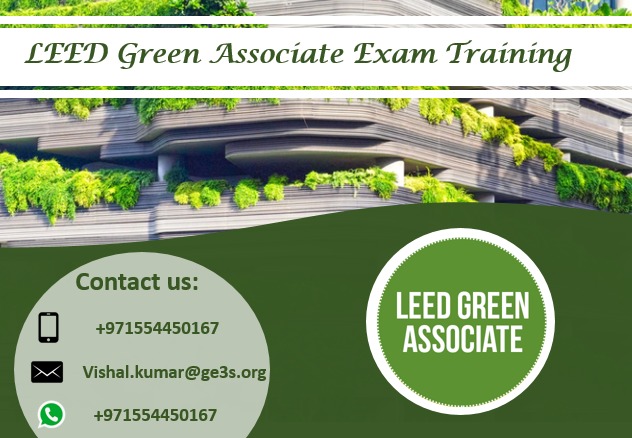LEED green associate exam and green building components
Today's blog
is on the green components of a building. GE3S provides leed green associate
exam preparation course and makes its trainees aware about these green
components
Electrical
components:
• The
electrical components in green buildings use energy saving in heating,
ventilation and air conditioners (HVACs).
• The energy
conservation components of green building design are optimum use of natural
light, use of energy efficient compact fluorescent lamps (CFL) or light
emitting diode (LED).
• The
generation techniques include the use of solar lighting, solar wind hybrid in
green buildings.
• The
integration of active and passive solar designs for harnessing solar energy is
also used. In addition to leed green associate exam training GE3S also provides
solar modelling training.
Special
Systems/Techniques
The
techniques such as
• Water
saving solutions
• Management
of grey water
• Rainwater
harvesting (RWH)
• Use of
porous pavements blocks
• Passive
solar design
•
High-performance glass windows and architecture
• Composting
units are applied in green building construction. LEED Green Associate Exam
syllabus is spread across all these techniques.
Scope of
green building:
In India,
you can see that in India major part of the energy is used for cooking. While
in USA that energy is mainly used for space heating, lighting, and appliances.
The difference in this energy consumption is very clear in developed and
developing countries. They show the
difference the developing countries mostly the energy consumption is for
cooking while in the USA like developed countries the energy used is mainly for
space heating, lighting other appliances. The home size of UAE is also higher
than in India. India it is around 40 m. sq while in USA ut has an average of
200 m. sq. The average annual change in buildings energy consumption in India
is 2.7 percent per year from 2015-20140 (IEO,2017). The global consumption of
electricity in buildings is growing at a rate of 2.5 percent per year. In
non-OECD countries, electricity usage is increased by nearly 6 percent. In
order to build a successful career in green buildings, an individual must pass
the leed green associate exam.
Scope of
Green Buildings-
Reduce
carbon dioxide emissions:
More than
40% CO2 emissions in developed countries come from heating, cooling and
powering buildings.
The good
insulation, window glazing and recovering heat from ventilation systems are
efficient ways to reduce emissions.
Increasing
the energy efficiency of buildings
• The energy
efficiency in the building is the sum total of energy efficiencies of each
component of it especially HVACs and other electronic appliances.
• According
to an IEA report, the annual production of CO2 from lighting is 1.9 GT
(Tomlinson, 2009).
• LED
lighting and smart-control are more efficient than traditional lighting
technologies. Energy efficiency in buildings is a critical element of LEED
green associate exam.
What are the
benefits of green buildings?
The
advantages of green buildings are grouped into three categories:
•
Environmental benefits
• Economic
benefits
• Social
benefits
What are the
environmental benefits of green building?
• It
improves air quality.
The CO2 emissions from green buildings
are comparatively lesser than the conventional buildings.
• It aimed
at water conservation and improves water quality.
• It helps
in effective waste management
• Reduces
energy consumption and thereby saves energy resources.
• It also
helps to restore the degraded natural resources
• These buildings
conserve biodiversity and protect the ecosystem. The green buildings prevent
habitat destruction for energy production and pollution from fossil fuel
combustion that threatens biodiversity.
Carbon footprint is also an aspect that an individual must know about
when preparing for the LEED green associate exam.
What are the
economic benefits of green buildings?
•
Cost-effectiveness in the long term
• It reduces
electricity consumption and so the charges to be paid (bills)
• The
operational cost in the buildings is comparatively less
• It helps
in optimization of life-cycle economic performance
• It
improves the productivity of the occupants live in the building
• The water
consumption gets reduced and wastewater generation and treatment also gets reduced.
What are the
social benefits of green buildings?
• Increase
in aesthetic value
• Indoor air
quality gets increased
• The high
comfort of the occupant in the buildings
• Improves
the occupant health
• It
improves overall life quality
• Enhance
occupant health and comfort
• The
infrastructure used gets reduced and so the pressure on it
• The
residential or commercial building with greatly reduced energy needs through
efficiency gains such that the balance of energy needs can be supplied with
renewable technologies are known as net-zero-energy building (ZEB).




Nice blog!! It is really informative and useful. You can also check this Similar site for Leed GA Training
ReplyDelete